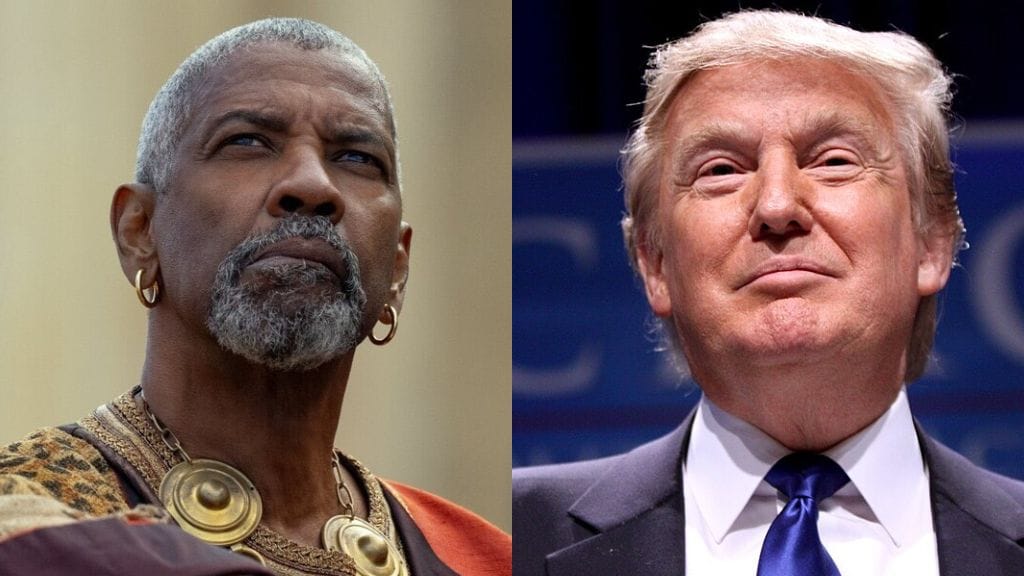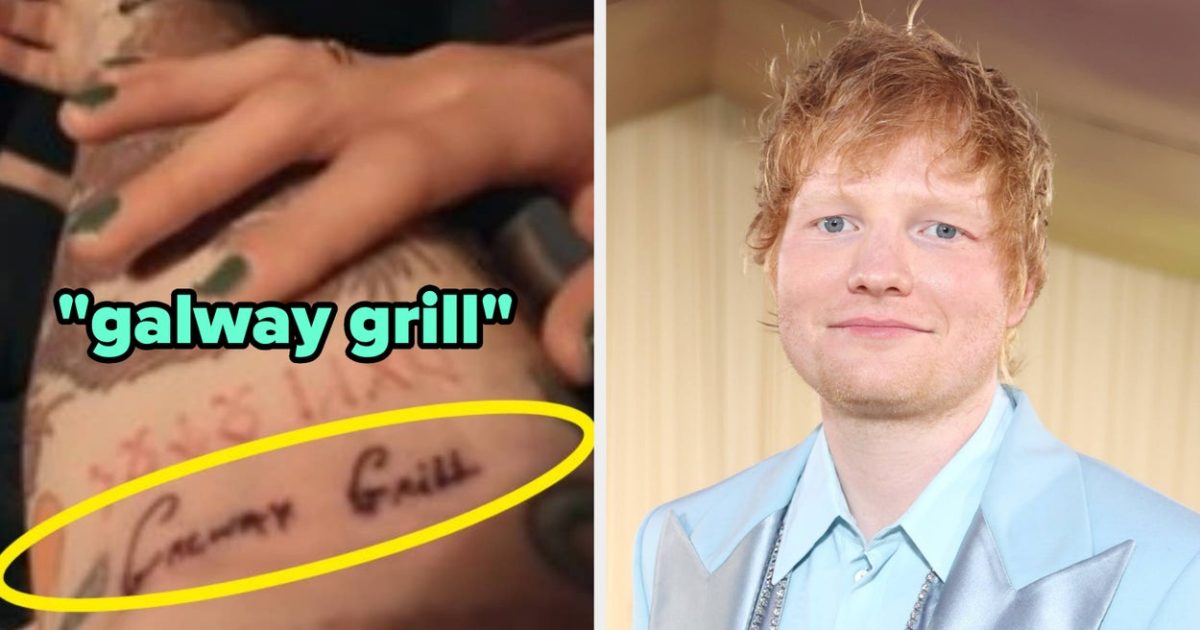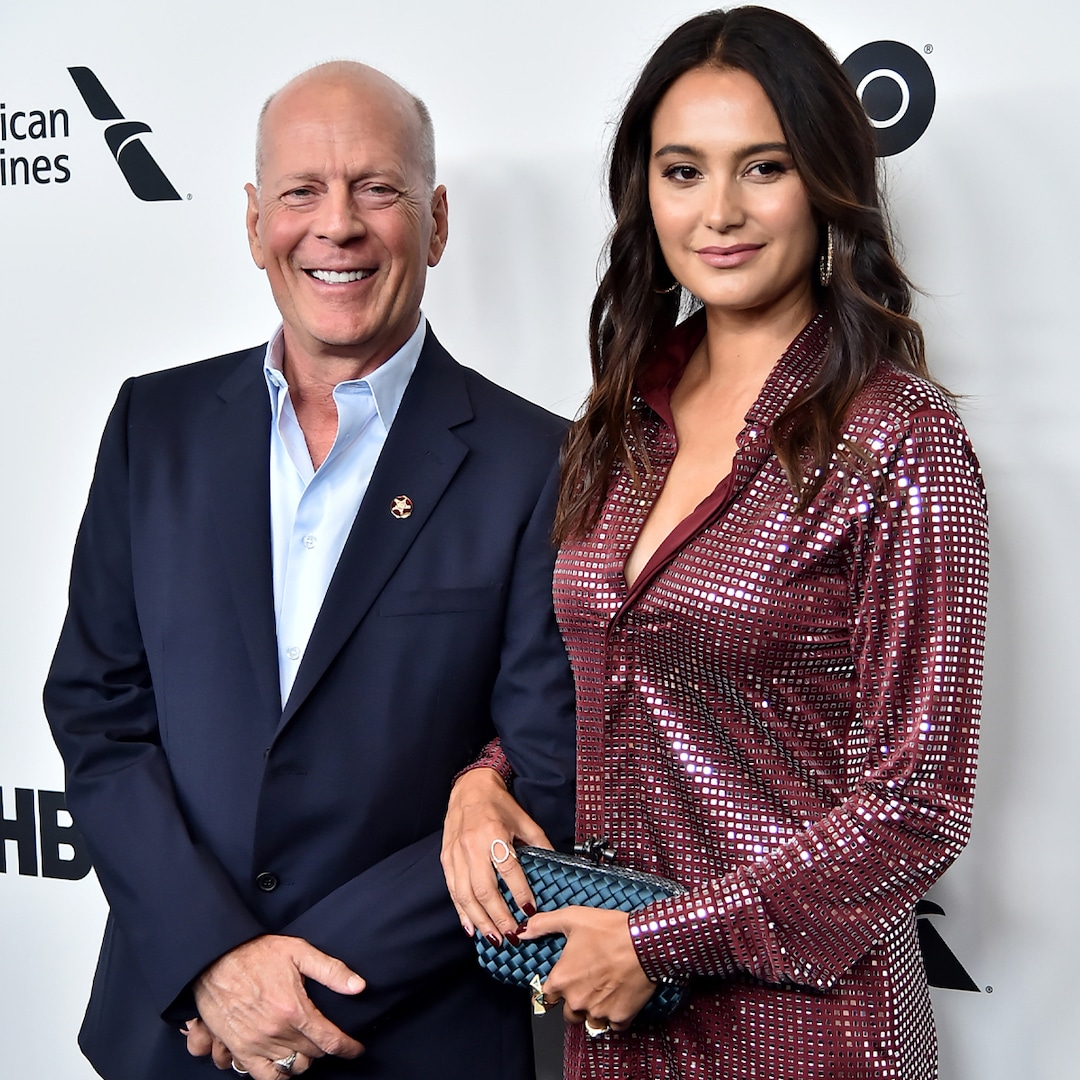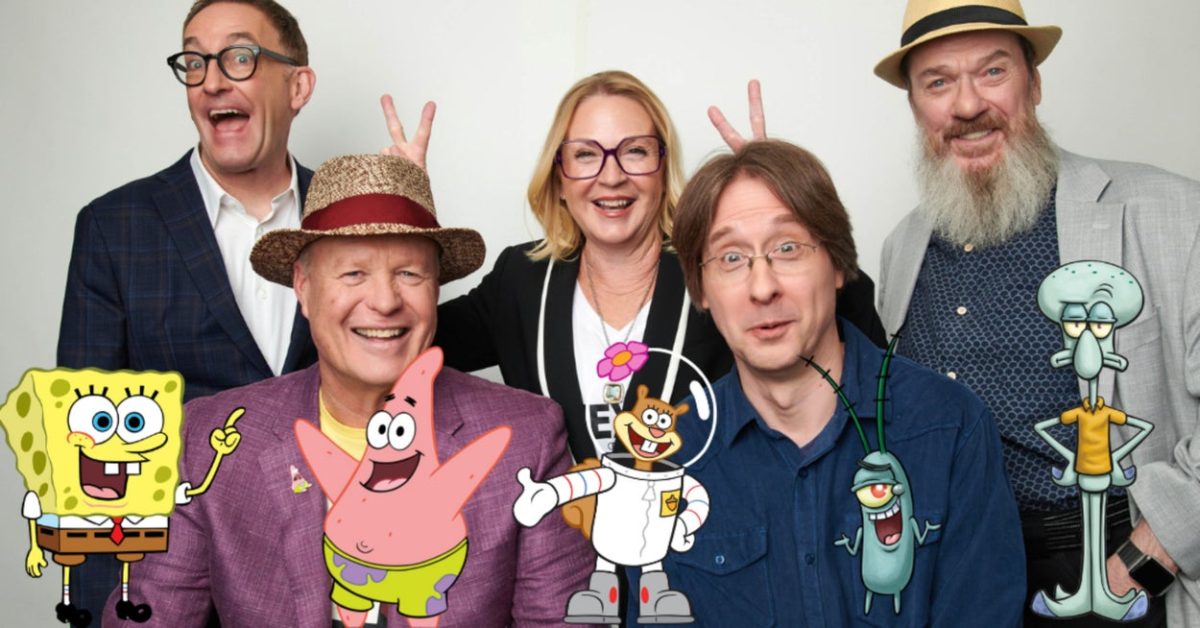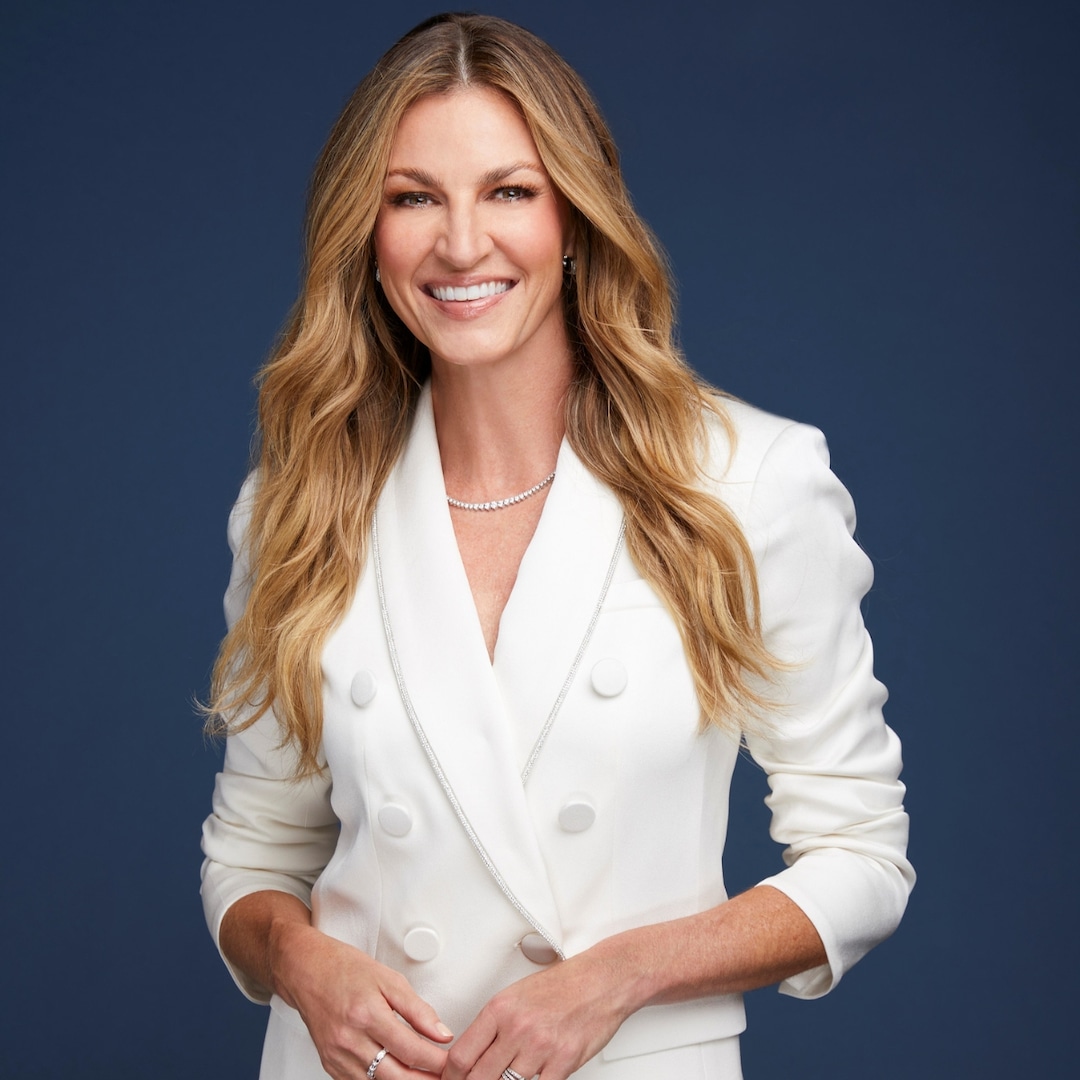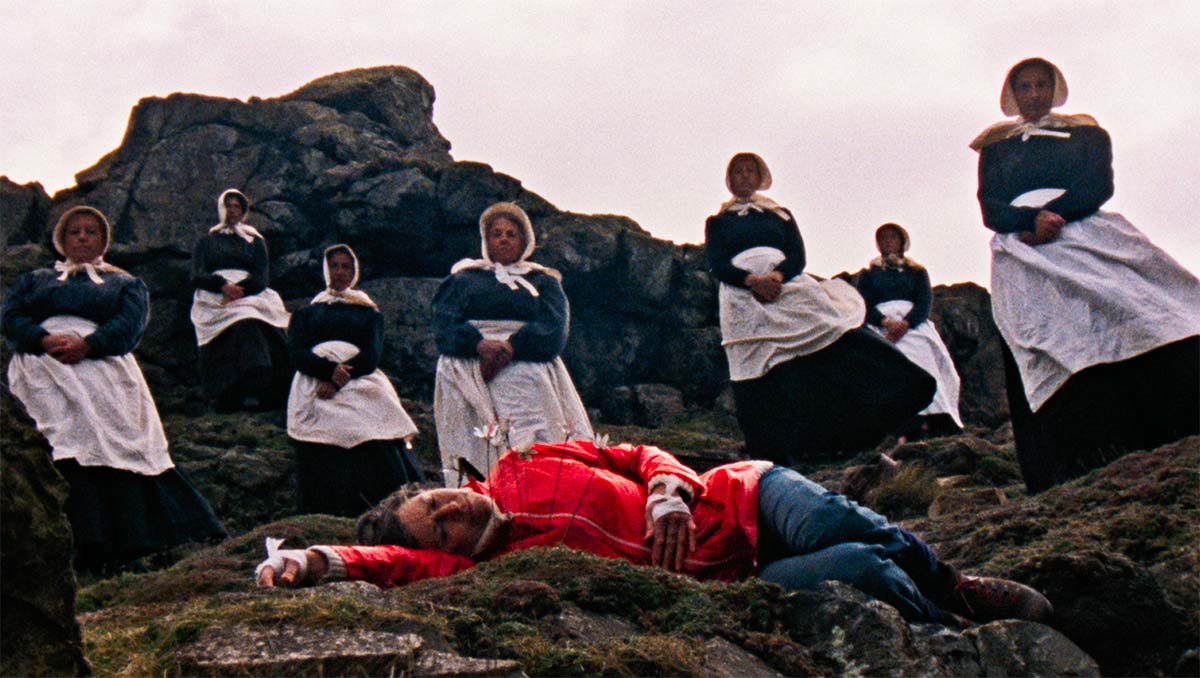
Director Mark Jenkin Talks ‘Bait,’ Robert Bresson & His Upcoming Time Travel Movie
Mar 31, 2023
Although he is rightly judged as being in the vanguard of British independent cinema, Mark Jenkin nonetheless seems out of place in such company. Unlike his contemporaries—Peter Strickland, Lynne Ramsay, Andrea Arnold, Clio Barnard, and Jonathan Glazer, among others—he is a strict formalist, creating expressions through the rhythms and combinations of images and sounds rather than through conventional narratives or theatrical gestures. And what makes him yet more unique, both in the UK and internationally, is the breadth of his creative abilities: he writes, directs, shoots, edits, produces, and scores each of his films, and sometimes even develops the film himself, as with his BAFTA-winning debut feature, “Bait.” Like “Bait,” his latest work, “Enys Men,” is rather difficult to categorize.
READ MORE: ‘Bait’ Trailer: NEON Releases Mark Jenkin’s Feature Debut In Select Theaters On March 31
At Cannes, Jenkin described “Enys Men” as “a lost Cornish folk horror,” though not without reservations (read our review of “Enys Men” here): “Some of the marketing people are dissuading us from calling it ‘lost.’ And I’m also uneasy calling it a horror film. Then we’re left with ‘Cornish folk,’ which doesn’t make sense, so we’re calling it ’a Cornish film.’”
Set on an island off the Cornish coast, “Enys Men” follows a wildlife trust volunteer, played by Mary Woodvine, whose job is to record the condition of a rare flower growing near an abandoned mine. Day after day, she completes her observations, but her daily life soon transforms into a haunting sleep state, in which past and present, reality and fantasy, lose all sense and distinction.
Last week we spoke to Mark Jenkin about “Enys Men,” the power of editing, his personal and professional partnership with Mary Woodvine, the influence of Robert Bresson on his work, and his upcoming time travel movie.
How did the production for “Enys Men” come about after “Bait”?It was written when we’d finished “Bait,” but before anybody had really seen “Bait.” I worked with another writer on the original idea, which was in flux for a little while. And then “Bait” came out, or it certainly had premiered in Berlin and played a few festivals, and there were a few reviews. We got the idea that it would break out to a certain extent; it just felt like it was bigger than we thought it was. So immediately, I started chatting with my agent, who I signed with off the back of Berlin. He really wanted to know what I was going to do next, what I wanted to do, and how he could represent me because, obviously, my type of filmmaking is a bit of a challenge for an agent. Me, him, and Denzel, the producer, came up with the idea that we would do something on a similar scale as “Bait” and go quick on it and not think too much—I mean, think a lot about the film, but not think too much about where the film was going to go and who the audience was going to be and stuff like that—because day by day, as we were developing this film, “Bait” was getting bigger and bigger. It would’ve been very easy to have gone; oh shit, how are we gonna follow this? So we thought we’d just get stuck into it straight away, so we didn’t have time to think like that. Unfortunately—for many reasons—a global pandemic came along and slowed us down, so I did start to think, if we’re not making the film, I’m going to be thinking a lot about the film while we’re not able to make it, and I was going to start putting the pressure on myself of how to follow up “Bait,” because by then it had won a lot of awards and had really been in the spotlight time in terms of independent British filmmaking. When we were allowed to shoot again, we all kind of went back into it with the same mindset. I jokingly said on the first day of principal photography—I got the cast and crew together; we’d never been together in person until that first day because we were working in lockdown—and I just said, Let’s just have fun, this is gonna be tough, it’s gonna be hard work and don’t forget, the last one won a BAFTA, so no pressure.
When was it written?The actual idea of it was developed between when “Bait” was finished and before anybody had seen it. And I knew I wanted to do something that was less of a straight drama. For me, before I got the big audience reaction back from “Bait,” I always looked at it and thought, This is just a really straight drama. It took an audience to look at it and get back to me and say, This is a weird film that doesn’t look or feel like any film that’s been around for a long time. At that point, I did realize that it was quite unique in the way it looked and felt, but when it was just me in the edit, I was just thinking, this is a really straight conventional drama, and I want to do something that is much more non-linear, and that’s where the idea really came from.
It’s interesting that you describe “Bait” as being a conventional drama. I was listening to an interview with Guy Maddin the other day, and he was arguing that dreams are innately melodramatic—it’s the real world that’s inhibited. And you’ve often described “Bait” as being like a soap opera, but it still has that dreamy quality to it. It’s maybe not surprising, then, that the melodrama took on the form of something more than what you’d see on BBC One.That’s a good quote, actually, because dreams aren’t inhibited, are they? That’s why sometimes, when you wake up in the morning, you can’t tell your nearest and dearest what you’ve just dreamt.
You’ve got a number of short films that are in color, but a lot of your longer films—“Bronco’s House,” “Enough to Fill Up an Eggcup,” “Hard, Cracked the Wind,” and “Bait”—are all in black and white. Why did you decide to shoot this one in color?I felt it needed to be shot in color. My starting point is always black and white, and then there has to be a justification for shooting color—which I think is the opposite way round to the way the industry generally works: to shoot black and white, you have to have a real justification. I understand black and white more than I understand color. When I’m thinking about the film I see everything in black and white. And I couldn’t really see “Enys Men” in black and white; I couldn’t see it working because, on a very basic level, color is important for the plot, to be able to recognize certain costumes and props and things like that. And also just being able to lean into the era that we were trying to invoke, the 1970s, and thinking that if someone was making a low-budget genre film in the ’70s, they’d probably be shooting it in color. So it was a pretty easy decision. And I think I had to push it more with the color, in terms of abstracting the sound and picture, because when you shoot black and white, there’s a layer of abstraction straight away, it’s just baked in as soon as you start shooting because we don’t see the world in black and white. “Enough to Fill Up an Eggcup” is a pretty straight documentary, but even to me, it still feels dream-like, and a lot of that is just because it’s black and white. So the idea pushed me into shooting color. I like the specific way that I work, but I do like to change things. “Bait” was shot in black and white on a single lens, and I thought, Actually, if this was a 1970s low-budget genre film, they’d probably get as much kit as they could and just use whatever they had. So we tried to set up a framework to work within that had an authenticity to the time we were trying to evoke without it being too over-the-top.
Sound plays an important part in “Enys Men,” both for adding to the experience of the Volunteer but also for sustaining the rhythm of the edit. Were there any differences between designing the sound for “Bait,” which is mostly naturalistic, and “Enys Men,” which is more of a waking dream like “Eraserhead”?With “Bait,” the rhythm of the film was set by the dialogue. I don’t record any location sounds, so all the actors have to come back in and do their dialogue. With “Bait,” I couldn’t get all the actors back in at the beginning of post-production because people were busy and it wasn’t easy scheduling them all to come back in. So I did an edit of “Bait” where I voiced every character. Talk about “Eraserhead” and David Lynch: that’s the ultimate Lynchian version of the film, the one where I’m voicing every character.
It’s like “Being John Malkovich”—or Being Mark Jenkin.
[Laughs] But with no humor. But I was able to set the rhythm of scenes with the dialogue and then build up the Atmoses and bring the score in and that kind of stuff. And then bit by bit the actors would come in and replace my lines until I was no longer in it and it was a mosaic of all of those characters. With “Enys Men,” because there’s so little dialogue, the rhythm was set much more by the foley and by some of the actuality, some of the Atmos beds. But the sound of the generator, in terms of setting a rhythm, became just as important as Mary coming in and doing her dialogue. So it was a very different process. I really loved it, actually, because I got to work on the sound straight away. There was no delay at all: as soon as I was cutting picture, I was cutting sound. In my studio here, I cut the picture on this bench, and all of my synths and tape loops are a couple of meters away, and I’ve got a bit of wooden floor down here that’s mic’d up to do footsteps, and I’ve got a door handle that I use. So I’m able to cut picture, sound and music all at the same time. Which is not to say that that all ends up in the final version, but I’m able to work out the rhythm of sound and picture all in one go. I did that on “Bait,” but I did it in a much purer way on “Enys Men” because there was so little dialogue to rely on.
Read more from this interview on the second page.
Publisher: Source link
Celebs With Embarrassing Tattoo Mistakes Revealed
If read vertically from top to bottom and horizontally from right to left, which is how Japanese is read, the tattoo translates roughly to say "ring seven fingers." However, if the tattoo is read horizontally from left to right and then…
Dec 24, 2024
Bruce Willis’ Wife Emma Shares Family Photos Amid His Health Battle
Bruce Willis’ wife Emma Heming Willis is cherishing the good times. Almost two years after the Die Hard actor’s wife, his ex-wife Demi Moore, and his kids Rumer Willis, 36, Scout Willis, 33, Tallulah Willis, 30, Mabel Willis, 12, and Evelyn Willis, 10, announced that…
Dec 24, 2024
SpongeBob Cast Shares Heartfelt Favorite Episodes
I asked two main questions throughout our conversation. My first question: It's been 25 years of iconic quotes, hilarious episodes, and memorable moments. From the perspective of the people who voiced the characters and produced the show, is there a…
Dec 23, 2024
Erin Andrews Shares Her Celine Dion-Inspired Holiday Tradition
We interviewed Erin Andrews because we think you'll like her picks. Some of the products featured are from Erin's brand WEAR by Erin Andrews. Our writers and editors independently determine what we cover and recommend. When you buy through our links,…
Dec 23, 2024


